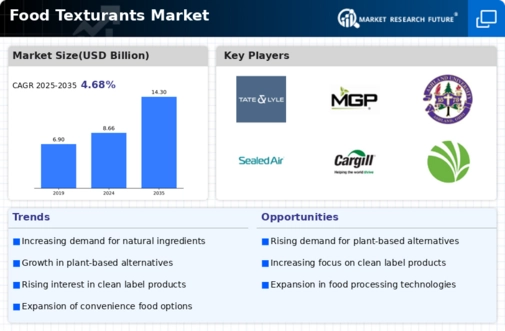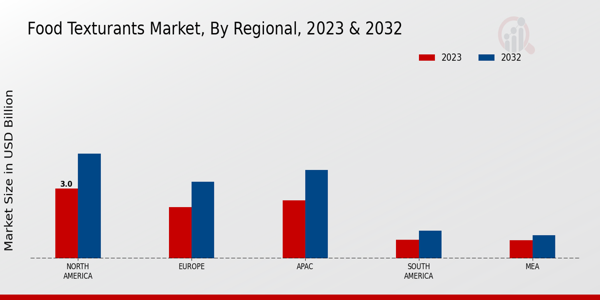Market Growth Projections
The Global Food Texturants Market Industry is projected to experience substantial growth, with estimates indicating a market value of 8.66 USD Billion in 2024 and a potential increase to 14.3 USD Billion by 2035. This growth trajectory suggests a compound annual growth rate of 4.69% from 2025 to 2035. Such projections highlight the increasing importance of food texturants in product formulations across various food categories. The anticipated growth underscores the need for manufacturers to innovate and adapt to changing consumer preferences, ensuring that they remain competitive in a dynamic market.
Health and Wellness Trends
Health and wellness trends are profoundly impacting the Global Food Texturants Market Industry. Consumers are increasingly seeking products that not only taste good but also offer health benefits. This has led to a rise in the incorporation of functional texturants that provide dietary fiber, protein, and other nutrients. As a result, manufacturers are focusing on developing texturants that align with health-oriented product lines. This shift is indicative of a broader movement towards healthier eating habits, which is expected to sustain market growth in the coming years.
Rising Popularity of Plant-Based Foods
The Global Food Texturants Market Industry is witnessing a surge in the popularity of plant-based foods, driven by shifting dietary preferences and increased awareness of health benefits. As more consumers adopt vegetarian and vegan diets, the demand for plant-based texturants, such as pea protein and carrageenan, is on the rise. This trend is not only reshaping product formulations but also expanding market opportunities for manufacturers. The market is expected to grow to 14.3 USD Billion by 2035, highlighting the potential for plant-based texturants to play a pivotal role in the future of food production.
Growing Demand for Clean Label Products
The Global Food Texturants Market Industry is experiencing a notable shift towards clean label products, driven by consumer preferences for transparency and natural ingredients. As consumers become increasingly health-conscious, they seek food products that contain fewer artificial additives. This trend is reflected in the rising demand for texturants derived from natural sources, such as plant-based gums and starches. The market is projected to reach 8.66 USD Billion in 2024, indicating a robust growth trajectory. Companies are responding by reformulating products to align with clean label standards, thereby enhancing their market competitiveness and appealing to a broader audience.
Expansion of the Food and Beverage Sector
The ongoing expansion of the food and beverage sector is a key driver for the Global Food Texturants Market Industry. As urbanization increases and disposable incomes rise, there is a growing demand for processed and convenience foods. This trend is leading to an increased utilization of food texturants to enhance the sensory attributes and shelf-life of products. Manufacturers are leveraging texturants to improve mouthfeel and texture, thereby catering to consumer preferences. The industry's growth is indicative of the broader economic trends, as the food and beverage sector continues to evolve in response to changing consumer lifestyles.
Innovation in Food Processing Technologies
Advancements in food processing technologies are significantly influencing the Global Food Texturants Market Industry. Innovative techniques, such as high-pressure processing and microencapsulation, are enhancing the functionality and application of food texturants. These technologies allow for improved texture, stability, and shelf-life of food products. As a result, manufacturers are increasingly incorporating novel texturants to meet evolving consumer expectations. The market's growth is further supported by the anticipated compound annual growth rate of 4.69% from 2025 to 2035, reflecting the industry's commitment to innovation and quality enhancement.















Leave a Comment